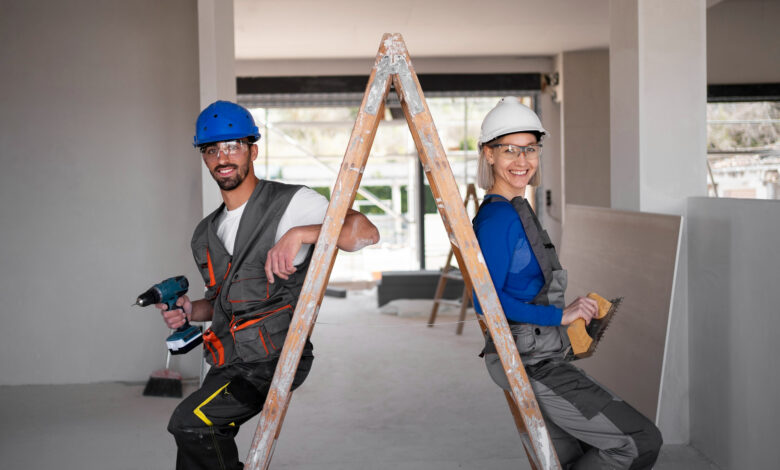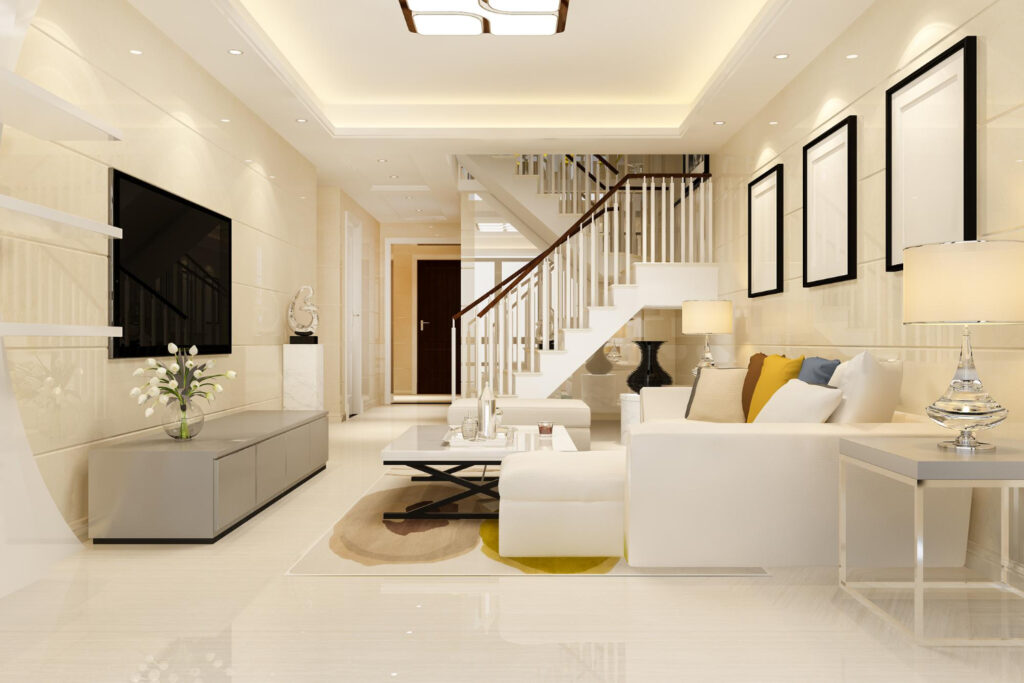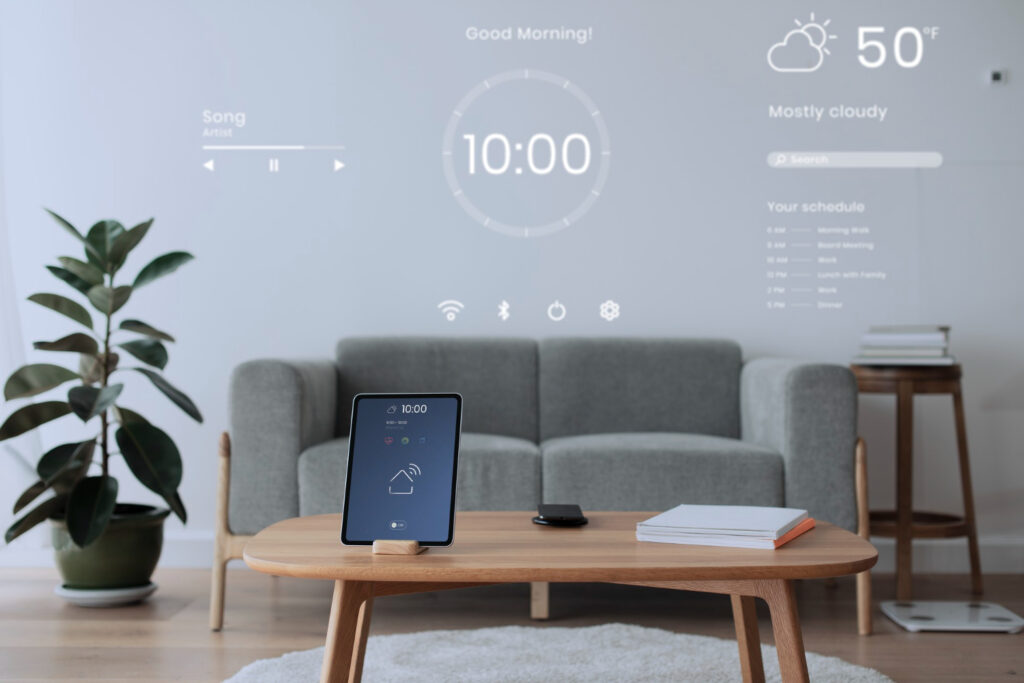How to Renovate Your Home: Tips for a Modern Look

Renovating your home is an exciting venture that allows you to transform your living space into a modern oasis tailored to your tastes and preferences. Whether you’re looking to enhance functionality, boost energy efficiency, or simply update the aesthetics, a well-planned renovation can breathe new life into your home. In this comprehensive guide, we’ll explore the essential steps and tips for achieving a modern look for your home renovation project.
1. Introduction
What is home renovation?
Home renovation involves making significant changes or improvements to your home’s structure, layout, or aesthetics. It can range from minor updates like repainting walls to major overhauls such as kitchen remodels or room additions.
Importance of modernizing your home
Modernizing your home not only enhances its visual appeal but also improves functionality and comfort. With the rapid advancements in design and technology, updating your home to reflect modern trends can increase its value and make it more attractive to potential buyers.
2. Planning Your Renovation

Before diving into the renovation process, it’s crucial to plan meticulously to ensure a successful outcome.
Assessing your needs and goals
Start by identifying the areas of your home that require renovation and prioritize your needs and goals. Whether it’s expanding your living space, upgrading outdated fixtures, or improving energy efficiency, clearly define your objectives to guide the renovation process.
Setting a budget
Establishing a realistic budget is essential to avoid overspending and financial strain. Consider factors such as materials, labor costs, permits, and unexpected expenses when setting your budget. It’s advisable to allocate a contingency fund for any unforeseen circumstances that may arise during the renovation.
Hiring professionals vs. DIY
Decide whether to hire professionals or tackle the renovation yourself based on your budget, skills, and the complexity of the project. While DIY renovations can save money, complex tasks such as electrical work or structural modifications are best left to experienced professionals to ensure safety and compliance with building codes.
3. Designing Your Modern Home

The design phase is where you can unleash your creativity and personalize your home to reflect your style preferences.
Choosing a modern aesthetic
Consider contemporary design elements such as clean lines, minimalist décor, and sleek finishes to achieve a modern look. Incorporate neutral color palettes with pops of bold hues for a sophisticated yet inviting atmosphere.
Incorporating sustainable elements
Embrace sustainability by choosing eco-friendly materials and energy-efficient appliances. Opt for renewable resources such as bamboo flooring, recycled glass countertops, and low VOC paints to minimize environmental impact and promote a healthier indoor environment.
Maximizing natural light
Ample natural light can enhance the ambiance of your home and create a sense of spaciousness. Install large windows, skylights, and glass doors to maximize natural light penetration and reduce reliance on artificial lighting.
4. Renovation Essentials
Certain key components can significantly impact the overall look and feel of your renovated home.
Upgrading fixtures and appliances
Replace outdated fixtures and appliances with modern, energy-efficient alternatives to improve functionality and reduce energy consumption. Choose sleek, contemporary designs that complement your overall aesthetic while offering enhanced performance and convenience.
Flooring options for a modern look
Select flooring materials that align with your design vision and lifestyle preferences. Popular options for modern homes include hardwood, laminate, and tile flooring, each offering durability, versatility, and aesthetic appeal.
Updating paint and finishes
Fresh paint can instantly revitalize your home and create a cohesive, modern look. Choose neutral tones like gray, beige, or white for walls and ceilings, and add visual interest with accent walls or textured finishes for a contemporary vibe.
5. Smart Home Integration

Incorporating smart technology into your home can enhance comfort, convenience, and security.
Incorporating smart technology
Invest in smart home devices such as thermostats, lighting systems, and security cameras to automate tasks and monitor your home remotely. With voice-activated assistants like Amazon Alexa or Google Assistant, you can control various functions with simple voice commands for added convenience.
Enhancing convenience and efficiency
Smart home technology can streamline daily routines and improve energy efficiency. Program thermostats to adjust temperatures based on occupancy patterns, install smart lighting systems with motion sensors, and integrate smart appliances that optimize energy usage to reduce utility bills and environmental impact.
6. Outdoor Spaces
Don’t overlook the outdoor areas when renovating your home, as they offer additional opportunities for relaxation and entertainment.
Revamping your outdoor area
Upgrade your outdoor space with landscaping, hardscaping, and outdoor furniture to create a functional and inviting environment. Consider features such as patios, decks, fire pits, or outdoor kitchens for alfresco dining and entertaining.
Creating functional and stylish outdoor living spaces
Design outdoor living spaces that seamlessly extend your indoor living area and reflect your personal style. Incorporate comfortable seating, shade structures, and decorative elements to create a cozy retreat where you can relax and unwind amidst nature.
7. Maximizing Storage
Effective storage solutions are essential for maintaining a clutter-free and organized home.
Utilizing space-saving solutions
Optimize space utilization by incorporating built-in storage solutions such as cabinets, shelves, and closets. Maximize vertical space with floor-to-ceiling storage units and utilize underutilized areas like corners and alcoves for custom storage solutions.
Incorporating built-in storage options
Customize storage solutions to meet your specific needs and lifestyle requirements. Design built-in cabinets, drawers, and organizers that blend seamlessly with your home’s architecture and provide ample storage for clothing, accessories, and household items.
8. Eco-Friendly Renovations
Make environmentally conscious choices when renovating your home to reduce your carbon footprint and promote sustainability.
Using sustainable materials
Choose eco-friendly materials such as reclaimed wood, recycled glass, and natural stone for your renovation projects. These materials not only minimize environmental impact but also add character and charm to your home’s interior and exterior spaces.
Energy-efficient upgrades
Invest in energy-efficient appliances, HVAC systems, and insulation to reduce energy consumption and lower utility costs. Seal air leaks, upgrade windows and doors, and install programmable thermostats to enhance thermal comfort and reduce heating and cooling expenses.
9. Renovation Mistakes to Avoid
Avoid common pitfalls that can derail your renovation project and lead to costly mistakes.
Skipping the planning phase
Rushing into a renovation without proper planning can result in design flaws, budget overruns, and delays. Take the time to thoroughly assess your needs, set realistic goals, and create a detailed plan before commencing any work.
Ignoring the importance of budgeting
Failing to budget accurately can lead to financial strain and unfinished projects. Account for all expenses, including materials, labor, permits, and contingencies, and prioritize your renovation goals to ensure you stay within budget.
Overlooking essential details
Pay attention to every aspect of your renovation, from design and materials selection to execution and finishing touches. Addressing even the smallest details can make a significant difference in the overall quality and longevity of your renovated space.
10. Budget-Friendly Tips
Achieve your renovation goals without breaking the bank by implementing cost-effective strategies.
Prioritizing renovations
Focus on essential upgrades that provide the most value and impact, such as kitchen and bathroom renovations or energy-efficient improvements. Allocate your budget wisely to maximize the impact of your investment and tackle non-essential projects as finances allow.
DIY options for cost savings
Save money on labor costs by tackling DIY-friendly projects like painting, landscaping, or minor repairs. However, be realistic about your skills and limitations, and seek professional assistance for tasks that require specialized knowledge or expertise.
11. Conclusion
Renovating your home to achieve a modern look is an exciting endeavor that can enhance comfort, functionality, and aesthetics. By carefully planning your renovation, incorporating modern design elements and sustainable features, and avoiding common pitfalls, you can transform your home into a stylish sanctuary that reflects your personality and lifestyle.
Call to Action (CTA)
Ready to transform your home into a modern masterpiece? Contact us today to discuss your home renovation project! Our team of experienced professionals is ready to turn your vision into reality.
Have you recently renovated your home with us? We’d love to hear about your experience! Leave a comment below and share your thoughts on your home renovation journey. Your feedback helps us continue to provide exceptional service to our clients.
FAQs
- How long does a home renovation typically take?
- The duration of a home renovation depends on various factors, including the scope of work, size of the project, and availability of materials and labor. Minor renovations may take a few weeks to complete, while major overhauls can span several months.
- How much does a home renovation cost?
- The cost of a home renovation varies widely depending on the scope of work, materials used, and labor costs in your area. It’s essential to set a realistic budget and obtain multiple quotes from contractors to ensure you’re getting a fair price.
- Can I live in my home during renovation?
- In most cases, it’s possible to live in your home during renovation, although it may be disruptive depending on the extent of the work. Communicate with your contractor to minimize inconvenience and ensure safety measures are in place to protect occupants.
- Do I need permits for my renovation project?
- Depending on the scope of work and local regulations, you may need permits for certain renovation projects, particularly those involving structural changes or electrical and plumbing upgrades. Check with your local building department to determine permit requirements.
- How can I ensure a successful renovation?
- To ensure a successful renovation, it’s essential to plan meticulously, communicate effectively with your contractor, and remain flexible to accommodate unexpected challenges or changes. Prioritize quality materials and craftsmanship to achieve long-lasting results.




